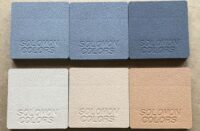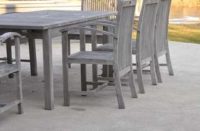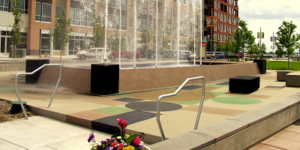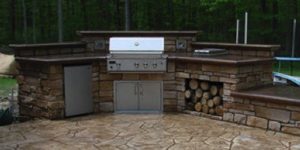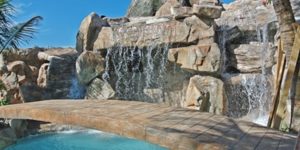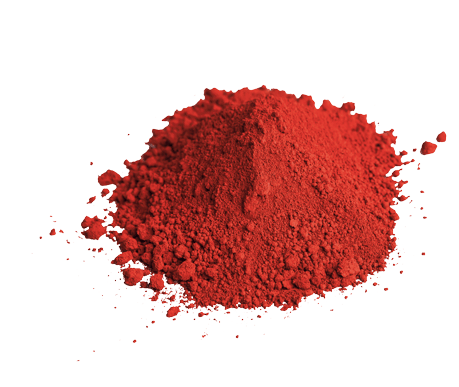
Greg Hurst still recalls the first time he used integral color for a concrete installation project. It was 2010 and the founder/owner of Alabama Decorative Concrete in Birmingham had been hired to install a 12,000-square-foot driveway that would have stamped concrete throughout. At the time, it was his biggest job, and Hurst was concerned about getting it done properly.
“It’s one thing to use color hardener over a 500-square-foot patio, but it’s another to do it over a football field,” he says.
Hurst consulted with Alabama Pigments Co.’s (APC) national sales manager Frankie Smeraglia, and after learning about the installation process, he decided on integral color. The results were so impressive that he’s been a dedicated user of integral color ever since.
“It was a no-brainer,” he says. “If I can have my color in there and all I have to do is come back and spray liquid release and start stamping, that’s it. The amount of labor I would have had to work in the hardener, have the stamps rolling and everything else just to be able to make progress, it was overwhelming.”
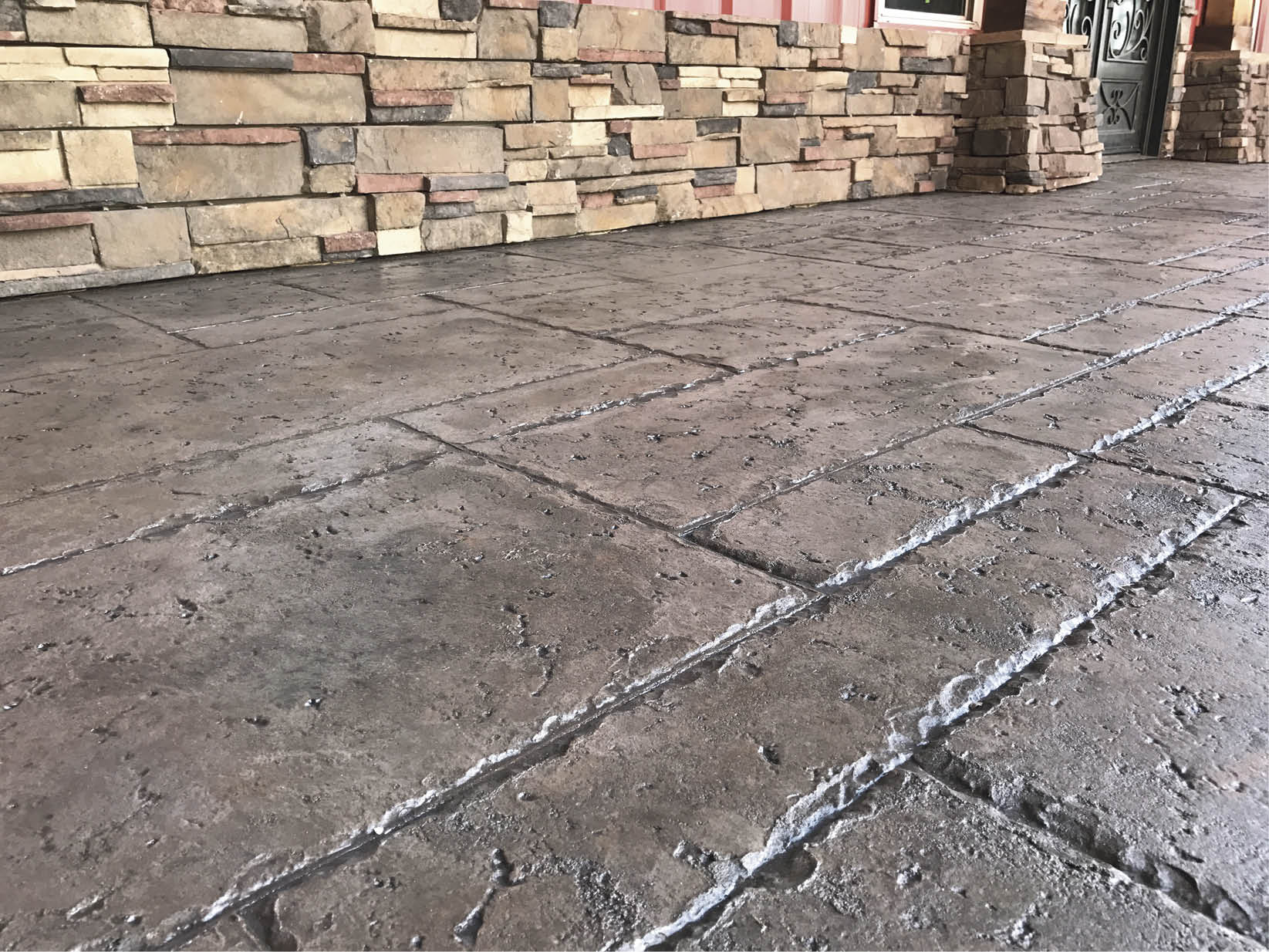
The benefits of integral color
Hurst isn’t alone. In fact, more concrete professionals and their clients are discovering the many benefits of integral color than ever before. Thanks to the growing popularity of visually inspired social media platforms such as Pinterest and Houzz, coupled with the ever-increasing access to home improvement shows and DIY videos, integrally colored concrete is gaining a new following of consumers who are interested in the product for their homes.
“Right now, there’s a tremendous push from customers who want to add integral color to projects for the first time in a long time because of the exposure the industry is getting from these shows. People are adding integral color in residential projects as well as in more architectural buildings,” says Brian Raleigh, business and brand manager at Davis Colors. “The world has recognized that you can manipulate gray concrete and make it functional and beautiful if done correctly.”

Despite this growth, the use of integral color is predominantly in states such as Florida, Texas and California. Although Middle America hasn’t quite caught on to the trend, Raleigh says the industry is working to change that via outreach, training and working directly with ready-mix dealers.
Meanwhile, several other factors continue to drive the increased exposure integral color is receiving. Here, a few industry insiders weigh in on what’s driving integral color’s surge in popularity and what you need to know about the technique.
A multitude of benefits
Integral color is a blended oxide pigment available in dry and liquid form that’s combined with concrete in a ready-mix truck and placed on-site for a rich, fade-resistant finished product. Unlike color hardener, which is broadcast across the surface of a freshly placed slab and troweled in, integral color is blended throughout the mix.
Integral colors can be used for just about any application from plazas, parking decks and sidewalks to tilt-up panels, pool decks and concrete planters. An ideal choice for residential and commercial clients alike, integral color is a very durable option, particularly for heavy-traffic areas, says Davis’s Raleigh.
“Ultimately the difference becomes a difference of aging. If you think in terms of sidewalks or steps or other high-traffic areas, the hardener over time is going to bear the brunt because it’s a topical,” he says. “Integral color is part of the ‘batter.’ If there’s a chip or crack, there’ll still be color there.”
Concrete professionals also tout integral color’s less labor-intensive application process noting that it requires little effort to mix the color in and takes two-to-three fewer workers on-site per job. In addition, Hurst says using integral color over hardener can shave up to a few days off a project, depending on its size.
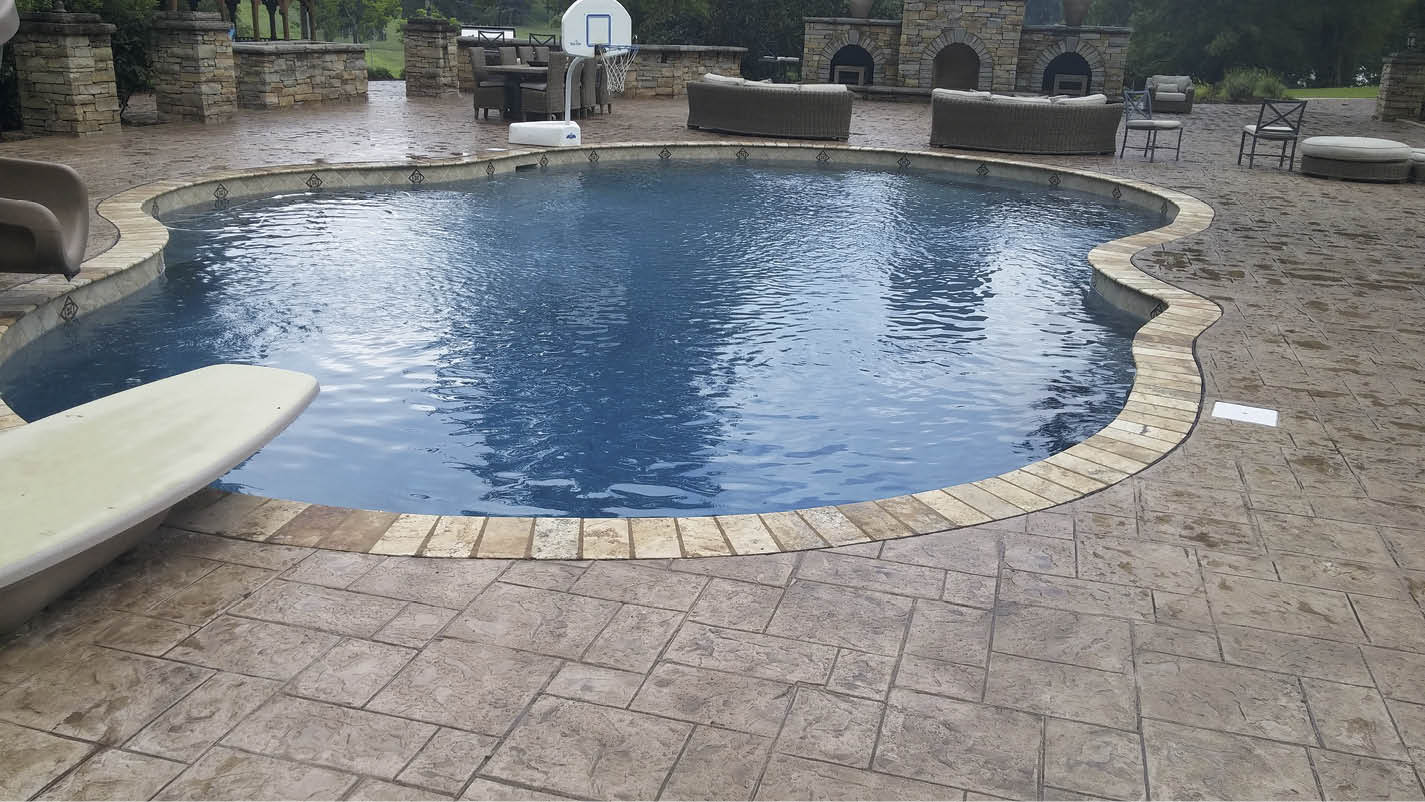
“I have done a few jobs with color hardener,” says Hurst, “and it’s a whole other ballgame. It’s definitely way harder to use.” Rather than just adding a bag of color into the truck for every yard of concrete, you must broadcast the powder and trowel it in. “(This) means it’s going to dry faster, which means you have less stamp time.”
How to use integral color for concrete
APC Precision-Pacs come in premeasured per cubic yard repulpable bags that you toss into a mixer without opening or pouring. The mixing disintegrates the bag and the pigment disperses throughout the mix. A batch label system assures quality as it tracks the product through production. It then follows that batch to the warehouse and to your job site.
It’s critical to use the same ready-mix company throughout a job as sand, cement and aggregate can affect color consistency. Weather and water ratio also factor in.
Adding to integral color’s appeal is the ability for manufacturers such as APC to match custom colors for specific projects. The company’s color chart features 35 of its most popular colors.
Requests can vary and more often receive inspiration from other textures and colors found in the project or its surroundings, such as stone, brick or trim. Although Hurst will typically steer his clients toward earth tones, there are times when a client gets inspiration from something a bit more unusual.
“I’ve taken a homeowner’s boxer to the lab,” Hurst says. “and said she wants this color. We did it, and she loved it.”
Know before you go
It may be easy to use, but there are still certain cautions to note when working with integral color. Manufacturers such as Scofield, a business unit of Sika Corp., have educational materials with easy-to-follow, step-by-step instructions for using integral color.
Some of the best practices Scofield highlights in its literature for how to successfully place color-conditioned concrete include tips such as:
- If a job involves more than one placement, place color-conditioned concrete in as short a time span as possible. Finish as soon as placed.
- You must place color-conditioned concrete at a consistent slump throughout the pour, with a maximum slump of 5 inches.
- Vibrate, tamp or screed the concrete, then float it to the specified finished grade, flatness and levelness.
- To finish color-conditioned concrete, use wood floats instead of magnesium floats to avoid sealing the surface and entrapping moisture.
- Always wait for bleed water “sheen” to disappear before starting floating and troweling.
- Don’t use a long-handled fresno trowel. Minimize hard-steel troweling to avoid trowel burns. Finish all the edges first and do all final hand-finishing in the same direction.
When it comes to mixing, Hurst says the job site is the best place for it. Once mixed, the color begins to extract moisture from the concrete. If you mix the color in at the plant, drive time and traffic snags may throw off the concrete’s consistency and color.
The importance of water
Perhaps, the most important thing to remember when installing integral color is the amount of you use water. Be sure to use the same mix design and a consistent water-to-cement ratio throughout the job with a slump between 4 and 6 inches. “Color variation may occur if batch proportion and slump are not maintained from load to load,” Smeraglia says.
Water can greatly affect the final color, he continues. “Adding too much water will lighten the color of the project. This will give it a pale or washed-out look.” Avoid using extra water on the job site. Don’t wet finishing tools or add water to the surface of the colored concrete. When you require better flowability, use a plasticizer or water-reducing admixture.
Once you have placed the concrete, you are at the mercy of the weather. This is according to Cam Villar, former director of marketing for Scofield. To ensure inclement weather doesn’t affect a job, Villar suggests avoiding a pour within three days of rain to avoid discoloration.
www.alabamapigments.com
www.birminghamconcretefloors.com
www.daviscolors.com
www.scofield.com
